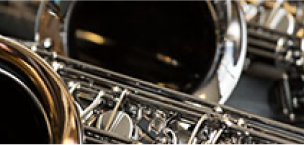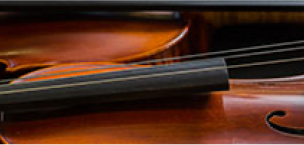Caring for your Orchestral Stringed Instrument
Wooden stringed instruments are fragile. Taking proper care of your instrument
is a must in order to ensure years of enjoyable play. Here are a few easy
steps to keep your instrument in its best playing condition at all times.
Always keep your instrument in its case or on an instrument stand.
- Cases keep instruments safe from accidents and environmental changes.
- Avoid extreme and rapid temperature changes.
- During the winter months, be sure to use a humidifier and store the instrument in its case to maintain a safe humidity level.
- An easy rule-of-thumb: Keep your instrument in the same temperature and humidity level you would be comfortable in (between 70 ̊ and 80 ̊ F and 45% to 55% relative humidity is ideal).
Keep your instrument dry
- Condensation gathers inside of your instrument as you play. Be sure to expel any condensation remaining inside your instrument both during practice and before returning it to the case.
- If the exterior of the instrument gets wet be sure to dry it off with a towel. DO NOT close it in the case until you are sure it is dry. Wet environments allow for the growth of mold and mildew.
ALways remember to wipe down your instrument after playing.
- Use a soft, cotton cloth to remove excess rosin from the strings and instrument.
- Use a quality rosin to prevent excess buildup and damage to your bow or instrument.
Take proper care of your bow.
- The bow is very delicate, so be careful not to drop or bang it against anything.
- Keep the bow away from extreme temperatures.
- Always loosen the hair when you are not using the bow, otherwise the bow can warp and the hair will overstretch.
- Do not touch the bow hair itself.
Keep an eye on the bridge.
- As you tune the instrument, the strings tend to pull the top of the bridge toward the fingerboard.
- The bridge should be seated firmly to the top of the instrument and the feet (bottom of the bridge) should touch the top uniformly.
- If the bridge falls or breaks, or if the soundpost falls, be sure to loosen the strings and have the bridge or soundpost reset or replaced by our repair shop.
Keep an eye on the tuning pegs.
- The pegs at the top are pressure-fit into the holes of the peg box.
- The function of the pegs can be affected by wear and seasonal changes.
- If the pegs are not holding or are difficult to turn, have the pegs adjusted or replaced by our repair shop.
Know when to change your strings.
- If your strings start to fray, unwind, or become difficult to keep in tune, it is time to replace your strings.



